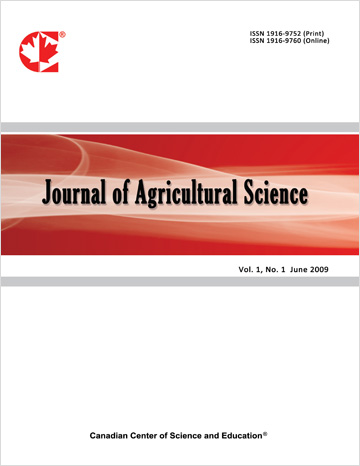Carbon Dioxide Emission, Soil Properties, Intercropping of Cucumber-Tomato and Carrot-Cabbage Crops Performance Affected by Application of Biochar, Urea, and Rock Phosphate
- Adebusoye O. Onanuga
- Roy Weasel Fat
- Roy M. Weasel Fat
Abstract
Application of biochar soil amendment is a good practice to store carbon dioxide (CO2) in the soil to mitigate climate change, rock phosphate and urea fertilizer increase soil fertility to enhance food security. This greenhouse experiment aimed to evaluate the effect of biochar, rock phosphate, and urea on cucumber-tomato intercrop and evaluate the carbon dioxide (CO2) emission in the soil grown with cabbage-carrot intercrop. The first experiment was carried out using varying levels of rock phosphate (25, 50 kg ha-1), biochar (25, 50, 100 kg ha-1) and urea (30, 60 kg ha-1) and control with no fertilizer application. The treatment combinations were replicated three times resulting in twenty-one experimental pots. The second experiment involved the application of biochar at different levels of application (25, 50, 100 kg ha-1) and control with no fertilizer application, all the pots across the experiment received an equal application of urea at a rate of 30 kg ha-1 and rock phosphate at a rate of 25 kg ha-1 replicated three times resulting in 12 experimental pots for cabbage-carrot intercrop while 15 pots with an extra biochar application of 120 kg ha-1 for cabbage only. Results showed that High nitrogen plus High phosphorus (N + P) including Low phosphorus plus Medium biochar (Low P + MC), Low nitrogen plus Low phosphorus plus High biochar (Low N + Low P + HC), and Low nitrogen plus Low biochar (Low N + Low C) supported the height of cucumber while Low nitrogen plus Low biochar (Low N + Low C) and High nitrogen (High N) positively influenced height of tomato. There was no significant difference in the number of cucumber fruits produced since the control and high N treatments significantly got the same number of cucumber fruit. In contrast, Low nitrogen plus Low biochar (Low N + LC) treated to tomato crop got the highest number of tomato fruits. In the second experiment, the Highest biochar including High biochar and Low C (Low biochar), favoured cabbage’s height while no significant effort in the treatments to support carrot height. It was estimated that the High C treatment gave the highest carbon dioxide emission while the Highest C treatment stored carbon dioxide in the soil.
- Full Text:
 PDF
PDF
- DOI:10.5539/jas.v14n6p40
Journal Metrics
- h-index: 67
- i10-index: 839
- WJCI (2023): 0.884
- WJCI Impact Factor (2023): 0.196
Index
- AGRICOLA
- AGRIS
- BASE (Bielefeld Academic Search Engine)
- Berkeley Library
- CAB Abstracts
- ChronosHub
- CiteSeerx
- CNKI Scholar
- Copyright Clearance Center
- CrossRef
- DESY Publication Database
- DTU Library
- e-Library
- EBSCOhost
- EconPapers
- Elektronische Zeitschriftenbibliothek (EZB)
- EuroPub Database
- Excellence in Research for Australia (ERA)
- Google Scholar
- Harvard Library
- IDEAS
- iDiscover
- Jisc Library Hub Discover
- JournalTOCs
- KindCongress
- LIVIVO (ZB MED)
- LOCKSS
- Max Planck Institutes
- Mendeley
- MIAR
- Mir@bel
- NLM Catalog PubMed
- Norwegian Centre for Research Data (NSD)
- Open J-Gate
- OUCI
- PKP Open Archives Harvester
- Polska Bibliografia Naukowa
- Qualis/CAPES
- RefSeek
- RePEc
- ROAD
- ScienceOpen
- Scilit
- SCiNiTO
- Semantic Scholar
- SHERPA/RoMEO
- Southwest-German Union Catalogue
- Standard Periodical Directory
- Stanford Libraries
- SUDOC
- Swisscovery
- Technische Informationsbibliothek (TIB)
- Trove
- UCR Library
- Ulrich's
- UniCat
- Universe Digital Library
- WorldCat
- WRLC Catalog
- Zeitschriften Daten Bank (ZDB)
Contact
- Anne BrownEditorial Assistant
- jas@ccsenet.org
